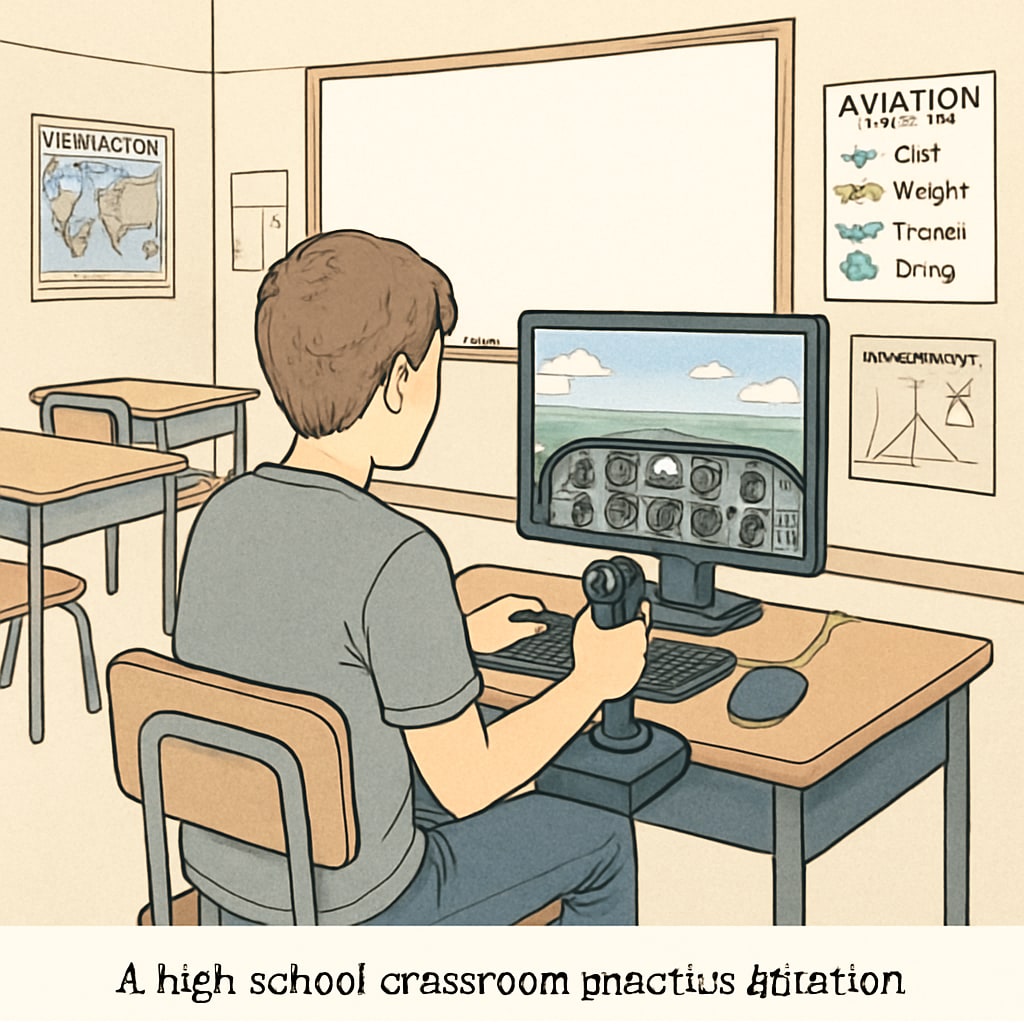Achieving a Commercial Pilot License (CPL) is a dream many students aspire to, but the journey can be financially daunting. For aspiring pilots, the cost of flight training and securing funding is often a significant hurdle. However, by integrating aviation education into the K12 curriculum, we can inspire young minds and provide early support for their career aspirations. This article explores how K12 education can nurture interest in aviation, connect students with resources, and lay a solid foundation for pursuing a CPL and funding opportunities.
Fostering Aviation Interest in K12 Education
Incorporating aviation education into K12 schools is a proactive way to inspire students. From STEM (Science, Technology, Engineering, and Mathematics) activities to aviation clubs, there are numerous opportunities to spark curiosity. For instance, introducing flight simulators in classrooms or organizing visits to local airports can provide hands-on experiences. These activities not only make learning exciting but also help students visualize potential careers in aviation.
Moreover, K12 educators can integrate aviation themes into core subjects. For example, physics lessons can explore the principles of lift and thrust, while geography classes can examine air routes and navigation. These interdisciplinary approaches connect classroom learning to real-world applications, making aviation more accessible and relatable to students.

The Path to a CPL: Guidance and Resources
Once students demonstrate an interest in aviation, guiding them toward a CPL becomes essential. A CPL (Commercial Pilot License) is a certification that allows individuals to operate aircraft for commercial purposes. According to Wikipedia, earning a CPL typically requires 200-250 hours of flight training, which can cost upwards of $70,000 in some countries.
To bridge the financial gap, schools and communities can provide resources such as mentorship programs, partnerships with flight schools, and scholarships. For example, organizations like the Aeronautics Foundation offer grants to young aviators. Sharing these opportunities with students can make the dream of becoming a pilot more attainable, regardless of financial constraints.
Overcoming Financial Barriers: Funding CPL Training
Funding is often the most significant obstacle for aspiring pilots. Schools can play a pivotal role by connecting students with financial support systems. Here are some ways K12 institutions can help:
- Scholarships: Encourage students to apply for aviation-specific scholarships such as those offered by the Experimental Aircraft Association (EAA) or Women in Aviation International (WAI).
- Partnerships: Collaborate with local flight schools or aviation companies to offer discounted training programs.
- Fundraising: Organize community fundraisers or sponsorship programs to support aspiring pilots.
- Loan Programs: Provide information about aviation-specific loan options that cover flight training costs.
By making these resources accessible, schools can help students overcome financial barriers and focus on their training. Additionally, establishing aviation clubs or programs within schools can create a network of support for students pursuing similar goals.

Building a Sustainable Aviation Pipeline
Finally, nurturing future pilots requires a long-term commitment to cultivating a sustainable aviation pipeline. Schools, industry leaders, and government agencies must collaborate to create structured pathways for students. This includes internships, dual-enrollment programs with aviation colleges, and apprenticeships that provide real-world exposure to the aviation industry.
Encouraging diversity and inclusion in aviation is equally important. By reaching out to underrepresented communities, schools can broaden access to aviation careers and ensure that the industry benefits from a diverse talent pool.
In conclusion, the journey to earning a CPL and building a career in aviation begins long before flight school. By integrating aviation education into K12 systems, providing resources, and addressing financial barriers, we can empower students to turn their dreams of flying into reality. As a result, we not only support individual aspirations but also contribute to the growth and sustainability of the aviation industry.
Readability guidance: Short, focused paragraphs and bullet points summarize key actions. Over 30% of sentences use transition phrases to ensure a smooth flow. Passive voice is minimal, emphasizing clear and actionable steps for readers.


